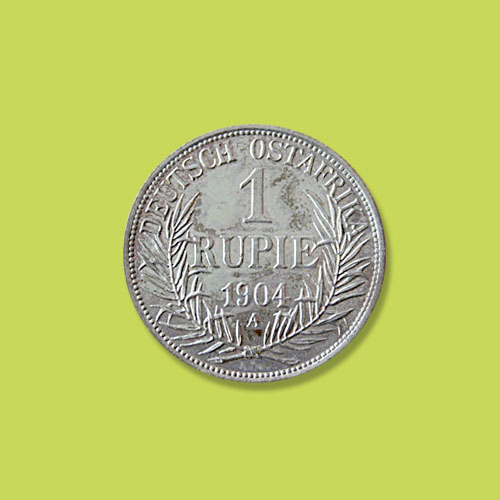Rupie of German East African
2020-10-31 Sat
Between 1890 and 1916, the Rupie was the currency of German East Africa. German East Africa colonies comprised of Burundi, Rwanda and Tanzania. The German East Africa attained rights to mint coinage in 1890. They issued rupies which were equivalent to the Indian and Zanzibar rupee.After 1904, Rupie was subdivided into 64 Pesa and also equivalent to 100 Heller. A fixed exchange rate of that contemporary period was 15 Rupien equal to 10 Mark.
In 1890, copper 1 Pesa and silver 1 and 2 Rupie coins were issued. Next year, silver ¼ and ½ Rupie were issued. 2 Rupie coins were issued in 1893. Later in 1904, bronze ½ and 1 Heller were introduced, followed by bronze 5 Heller and holed, cupro-nickel 10 Heller in 1908.
During World War I, a huge series of emergency banknotes were issued. It also included 15 Rupien coins which contained an equivalent amount of gold from the Sekenke Gold Mine which exuviated 15 German Marks.
Image Courtesy: Wikimedia.com
Latest News
-
Janma Kalnayak of Bhagwan Mahavir
2024-04-24 WedOn 21st April 2024 which was the 2550th Janma Kalnyanak of Bhagwan Mahavir Swami, PM Modi unveile...
-
Gold Pagoda of Vijaynagar Empire King Deva Raya I
2024-04-10 WedKing Deva Raya I of the Vijayanagara Empire was a patron of Kannada literature and architecture. He ...
-
Silver Denarius of Septimus Severus
2024-04-05 FriLucius Septimius Severus served as the Roman emperor from 193 to 211 AD. Severus sat on the throne o...
-
Extremely rare 'Malaharamari' type Gold Gadyana of King Guhalladeva-III Sold for INR 611000
2024-04-03 WedTribhuvanamalla, also known as Guhalladeva III, was the ruler of the Kadamba dynasty. His reign coin...
-
90 Years of RBI
2024-04-02 TueOn 1st April, PM #Modi unveiled a special commemorative coin marking 90 Years since the foundation o...

